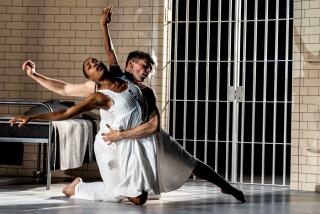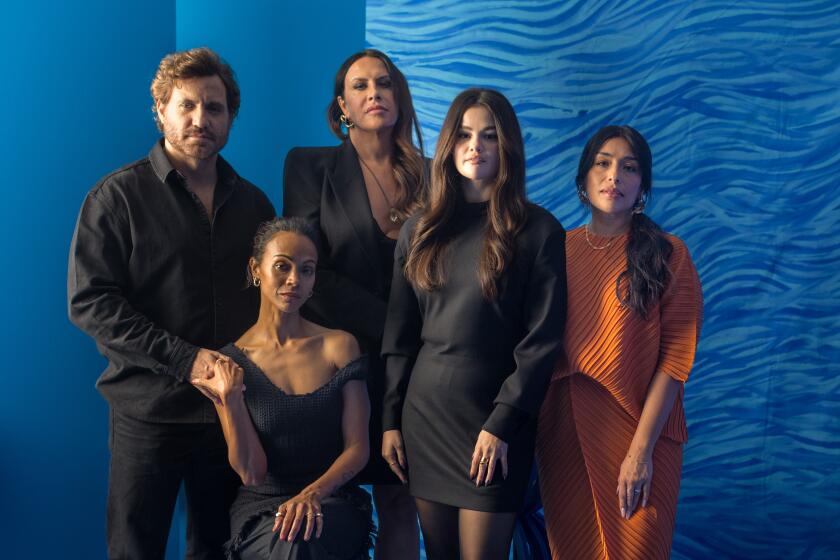A genius for the wild, high-low mix
TONIGHT, the Italian composer Ennio Morricone will receive an honorary Oscar. The Internet Movie Database lists 504 films and television shows that he has scored (and two more that have been announced). Among the well over 400 features, five of those soundtracks were nominated for an Academy Award. None won. The lifetime achievement award is his consolation prize, and he is none too happy about that.
For a composer to have written hundreds of hours of music -- some of it amazing, a lot of it distinctive, a bit of it famous, the vast majority (including more than 100 concert works) unknown -- not winning an Oscar has been a badge of distinction, as Morricone told the Associated Press recently. He is one of the great film subversives. And the consolation Oscar, along with an inevitably cornball tribute on the telecast, represents the mainstreaming of Morricone.
But the truly weird part of this hommage, however gushy or gauche, is that it will not be altogether inappropriate. Just as you cannot give Morricone too much credit, you cannot dumb him down too low. His music may represent the rebellious avant-garde, but it also sinks to unembarrassed sentimentality. It furthermore carves out an enormous amount of highbrow, middlebrow, lowbrow and bargain-basement-brow stylistic territory in between. And that is the source of his genius.
There can be little doubt that no composer (or anyone else, for that matter) has worked on so many movies or on such a mind-bogglingly wide variety of them. His fame is for the spaghetti westerns of Sergio Leone, particularly “A Fistful of Dollars,” “The Good, the Bad and the Ugly” and “Once Upon a Time in the West” -- although I’d elect “Duck, You Sucker” and “Once Upon a Time in America” as the greatest Leone films, in no small part because of the goofy sounds Morricone supplied for the former and the lavish sweep he gave to the epic structure of the latter.
Poke into Morricone’s vast oeuvre and you can’t miss the harrowing drumbeat tattoos from “The Battle of Algiers,” director Gillo Pontecorvo’s consummate re-creation of the Algerian struggle for independence.
The woozy yet realistic soundtrack to Pier Paolo Pasolini’s perverse “Salo” raises the film’s already over-the-top shock quotient to an intolerable level. Morricone scored “Cinema Paradiso” as though he were the world’s greatest barista, measuring with absolute precision how many grains of sugar are needed to counter a perfect espresso’s bitterness. His “Carmina Burana”-meets-Bartok music makes “The Mission,” an otherwise failed movie, indelibly memorable. But Morricone can just as merrily be a sonic slasher for creepy sex-crazed Italian exploitation flicks. Were it possible to track down “Beach Party, Italian Style” from the early ‘60s, the reward would likely be a hoot for the ears.
The theme from “The Good, the Bad and the Ugly” will surely be played more than once tonight at the Kodak Theatre. It’s a signature tune for a composer whose very essence is to have no signature tune, which means it was a hit and people associate it with Morricone. It’s also audacious music. The whistle, the whoop, the ‘60s rock guitar, the ocarina, the quick-tongued trumpets, the simple harmonies, the catchy melody are a combination never before associated with the American West or anyplace or anything else.
A master of nonassociation, Morricone does not Mickey Mouse. That is Hollywood’s lingo for making the music mimic the action, a technique that has little regard for the audience’s intelligence. Morricone, by contrast, forces viewers to be listeners as well, encouraging the eye and ear to multitask. And therein lies some of his subversiveness. Calling attention to himself, the composer insists that music add another point of view. His scores comment, often ironically, on the action. Film, when Morricone gets mixed up with it, is no longer merely the art of the gaze.
The rest of Morricone’s subversiveness is purely musical and cultural. He mixes what should not be mixed. Now 78, he spent his formative years in the ‘50s studying in Milan, Italy, where he appears to have picked up absolutely everything.
He learned impeccable technique from the leading academic Italian composers of the time. He absorbed the experiments of young Italian firebrands, notably Luciano Berio, including their work with electronically produced music and their layering of found sounds on tape. John Cage was all the rage in Italy in the late ‘50s, having appeared on an Italian television quiz show. That gave Morricone an appreciation of silence and natural effects. He scores films even when he doesn’t score films. The silences are pregnant. In Bernardo Bertolucci’s “La Luna,” a story of opera and incest, Morricone lets Verdi and pop music do all the nasty work for him. He’s as at home with the raw, otherworldly folk instruments of Sardinia as he is with ‘60s surf guitars and the soft, smooth polyphonic Masses of Palestrina.
Never just for effect
MORRICONE doesn’t switch-hit to be funny or outrageous. He takes himself deadly seriously. I interviewed him once a number of years ago, and he quickly dismissed the notion that his music was in any way ironic. If that is so, I haven’t a clue where his musical wild streak comes from. He cares a great deal about his concert music, but does anyone else? He became noticeably angry when I told him I didn’t know this music, although he admitted that neither recordings nor scores were easy to come by. How to explain that for a composer of his stature, hardly anyone plays the concert works outside Italy and there are still no major recordings. A cantata written in response to 9/11 that he conducted at the United Nations earlier this month was a dreary return to his ‘60s Italian avant-garde roots, revealing little of the sublime feeling for texture that runs through his film work.
Morricone’s conducting at the U.N. even of spaghetti-western hilarity was dull and pompous, if accomplished. And don’t call them spaghetti westerns in his presence. He may mix musical metaphors with delirious sensuousness and wage endless musical food fights with film, but Morricone is offended by any suggestion that art and food can be equated. But perhaps we are not supposed to take anything from this bewildering composer with a straight face.
This explains why Morricone cannot ultimately be mainstreamed. In a CD released last week, “We All Love Ennio Morricone,” the composer defeats the best (or is it the worst) efforts of such greats as Yo-Yo Ma, Herbie Hancock, Renee Fleming and Bruce Springsteen, all of whom attempt to make the composer fit into their straitjackets and are no more successful than the inconsequential Celine Dion.
The disc, unbelievably, appears to have Morricone’s blessing. He wrote the transitions between songs so Andrea Bocelli could segue to Metallica with the least ruffling of feathers.
Every track is awful -- ambiguous music made into predictable pablum. But maybe it is also Morricone’s ultimate act of subversion. He now is his own victim. Go figure.
No, don’t bother. You won’t get anywhere. He is one big mystery. And that is why I love Morricone.
More to Read
Only good movies
Get the Indie Focus newsletter, Mark Olsen's weekly guide to the world of cinema.
You may occasionally receive promotional content from the Los Angeles Times.











